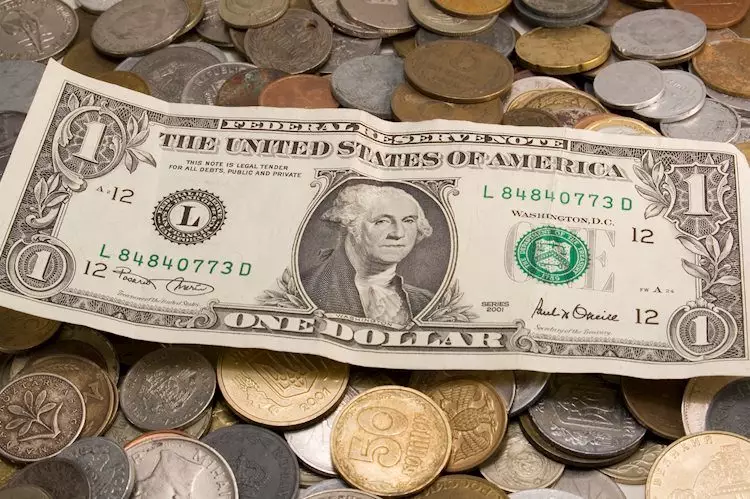The dynamics of the US economy are characterized by a perplexing blend of growth and moderation. Recent volatility following the Federal Reserve’s decisions has sparked a notable surge in the US Dollar (USD), showcasing its resilience in the face of economic uncertainty. Despite signs of a moderate slowdown, indicators and models—such as the New York Fed’s Nowcast—signal a promising trajectory for robust economic expansion in the upcoming third and fourth quarters. The prediction of 2.6% Seasonally Adjusted Annual Rate (SAAR) growth for Q3 and 2.2% SAAR for Q4 is a notable bright spot in an otherwise cautious economic forecast.
The Fed’s strategy revolves around analyzing real-time economic data to gauge the pace of its interest rate adjustments, reflecting a commitment to adjust policy in response to economic trends. This responsiveness underscores the central role monetary policy plays in shaping the currency’s strength, particularly in a period where financial conditions are expected to remain loose, thereby supporting the broader economy.
The impending US election introduces an additional layer of complexity to the financial markets, impacting perceptions and strategic moves among investors. Currently, the US Dollar is maintaining its ground, driven by a prevailing market optimism that is anticipated to hold through the weekend. This upward pressure comes despite the market’s persistent dovish outlook on future Fed actions. Interestingly, while initial market reactions indicated lowered expectations for rate hikes, sentiments have shifted. The market is now pricing in a potential 75 basis points in rate cuts by the year’s end, with a staggering projection of around 250 basis points for the following year.
This evolving landscape reflects a broader phenomenon wherein markets continuously reassess the implications of Federal monetary policy, revealing a dichotomy between market expectations and Fed intentions. The anticipation of significant rate cuts could promote a weaker USD, should these expectations materialize.
Delving into the technical aspects of the USD, the DXY index has recently exhibited hints of upside momentum; however, market indicators suggest that bearish trends may continue. The Relative Strength Index (RSI) currently hovers around 40, signaling potential oversold conditions, while decreasing green bars on the Moving Average Convergence Divergence (MACD) suggest a waning buying interest. This technical analysis implies a struggle for the USD to maintain strength amidst external pressures, as bear sentiment appears to be gaining momentum.
The currency’s support levels are identified at 100.50, 100.30, and 100.00, potentially acting as crucial thresholds for maintaining upward momentum. On the resistance front, watchpoints are established at 101.00, 101.30, and 101.60. The interplay between these support and resistance levels will be pivotal in determining the short-term trajectory of the Dollar.
To fully appreciate the significance of the USD’s current standing, it is essential to reflect on its historical evolution. The USD emerged as a cornerstone of global finance post-World War II, superseding the British Pound as the dominant reserve currency. This transition was rooted in the Bretton Woods Agreement and the subsequent abandonment of the Gold Standard in 1971, which laid the groundwork for a fiat currency system.
Today, the Federal Reserve’s monetary policy remains the key determinant of the USD’s value, significantly influencing its strength against foreign currencies. With mandates focused on controlling inflation and fostering full employment, the Fed’s ability to navigate these dual objectives shapes market expectations. Instruments such as interest rate adjustments and Quantitative Easing (QE) or Tightening (QT) serve as tools to either curb excessive inflation or stimulate a sluggish economy. For instance, the use of QE during the 2008 financial crisis aimed to inject liquidity into the collapsing credit market, thereby impacting the USD’s valuation negatively; conversely, QT strives to bolster the Dollar by reversing these liquidity-injecting measures.
As we navigate through a complex economic landscape fraught with uncertainty, the US Dollar’s strength remains a focal point for investors and policymakers alike. While current indicators suggest a resilient USD supported by optimistic growth forecasts, the interplay of future Fed decisions, market sentiment, and external economic variables will be crucial in determining the currency’s trajectory. The upcoming months will be pivotal as both economic and political events unfold, potentially reshaping the USD’s role not just as the leading currency in global finance but also as a barometer for the overall health of the economy.

